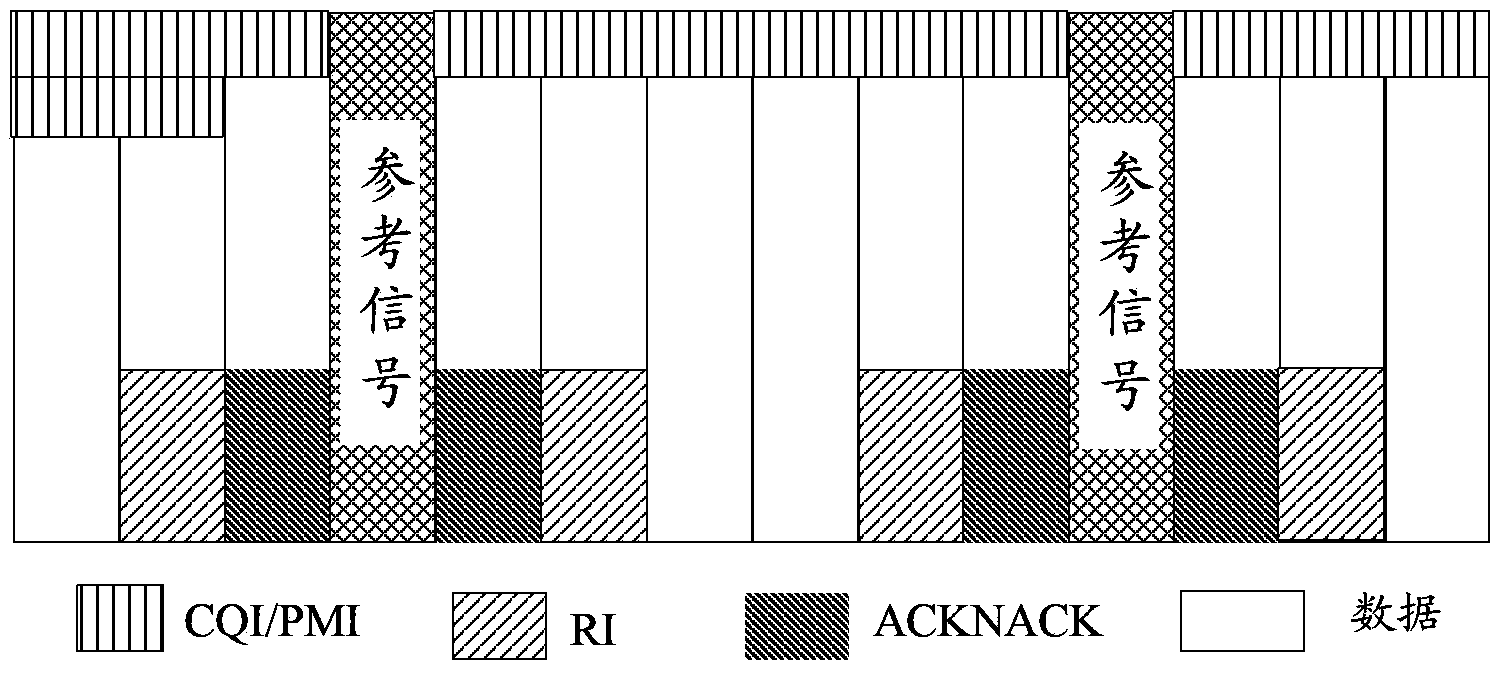Channel state information sending method and device
A technology of channel state information and state information, which is applied in the direction of transmission path sub-channel allocation, signaling allocation, and signaling as a feature, and can solve problems such as the inability to realize multiple serving cells
- Summary
- Abstract
- Description
- Claims
- Application Information
AI Technical Summary
Problems solved by technology
Method used
Image
Examples
Embodiment 1
[0051] Aiming at the problem that the related art does not support simultaneous transmission of CSI of multiple serving cells and / or multiple CSI-RS resources, an embodiment of the present invention provides a terminal, which includes a channel state information (CSI) transmitting device .
[0052] image 3 is a schematic structural diagram of an apparatus for sending channel state information according to an embodiment of the present invention, such as image 3 As shown, the device includes: an acquisition module 30, configured to acquire N physical uplink shared channel PUSCH resources for transmitting channel state information CSI, wherein, N is an integer greater than or equal to 1; a transmission module 32, coupled with the acquisition module 30, used The CSI is sent on the N PUSCH resources according to a predetermined rule.
[0053] In an implementation manner of the embodiment of the present invention, the acquisition module 30 acquires the N PUSCH resources in at le...
Embodiment 2
[0086] Figure 5 It is a flowchart of a method for sending channel state information according to an embodiment of the present invention, such as Figure 5 As shown, the method includes the following steps (step S502-step S504):
[0087] Step S502, the terminal acquires N physical uplink shared channel (PUSCH) resources for sending channel state information (CSI), where N is an integer greater than or equal to 1;
[0088]Step S504, the terminal sends the CSI on the N PUSCH resources according to a predetermined rule.
[0089] The PUSCH resource in step S502 can be obtained in one or more of the following ways;
[0090] Mode 1: high-level signaling configures the PUSCH resource for sending CSI, and obtains the PUSCH resource from high-level signaling;
[0091] Mode 2: The downlink control information (DCI) indicates the PUSCH resource for sending the CSI, and acquires the PUSCH resource according to the indication of the DCI;
[0092] Mode 3: The downlink control informatio...
Embodiment 3
[0125] Corresponding to the above method for sending channel state information, an embodiment of the present invention also provides a method for acquiring channel state information, Figure 6 It is a flowchart of a method for obtaining channel state information in an embodiment of the present invention, such as Figure 6 As shown, the method mainly includes the following steps (step S602-step S604):
[0126] Step S602, the base station provides the terminal with N physical uplink shared channel (PUSCH) resources for sending channel state information (CSI);
[0127] Step S604, the base station obtains the channel state information sent by the terminal on the N PUSCH resources;
[0128] Wherein, the base station provides the terminal with N PUSCH resources for sending CSI in at least one of the following ways: the base station configures the N PUSCH resources for the terminal through high-level signaling; the base station configures the N PUSCH resources for the terminal throu...
PUM
 Login to View More
Login to View More Abstract
Description
Claims
Application Information
 Login to View More
Login to View More - R&D
- Intellectual Property
- Life Sciences
- Materials
- Tech Scout
- Unparalleled Data Quality
- Higher Quality Content
- 60% Fewer Hallucinations
Browse by: Latest US Patents, China's latest patents, Technical Efficacy Thesaurus, Application Domain, Technology Topic, Popular Technical Reports.
© 2025 PatSnap. All rights reserved.Legal|Privacy policy|Modern Slavery Act Transparency Statement|Sitemap|About US| Contact US: help@patsnap.com



